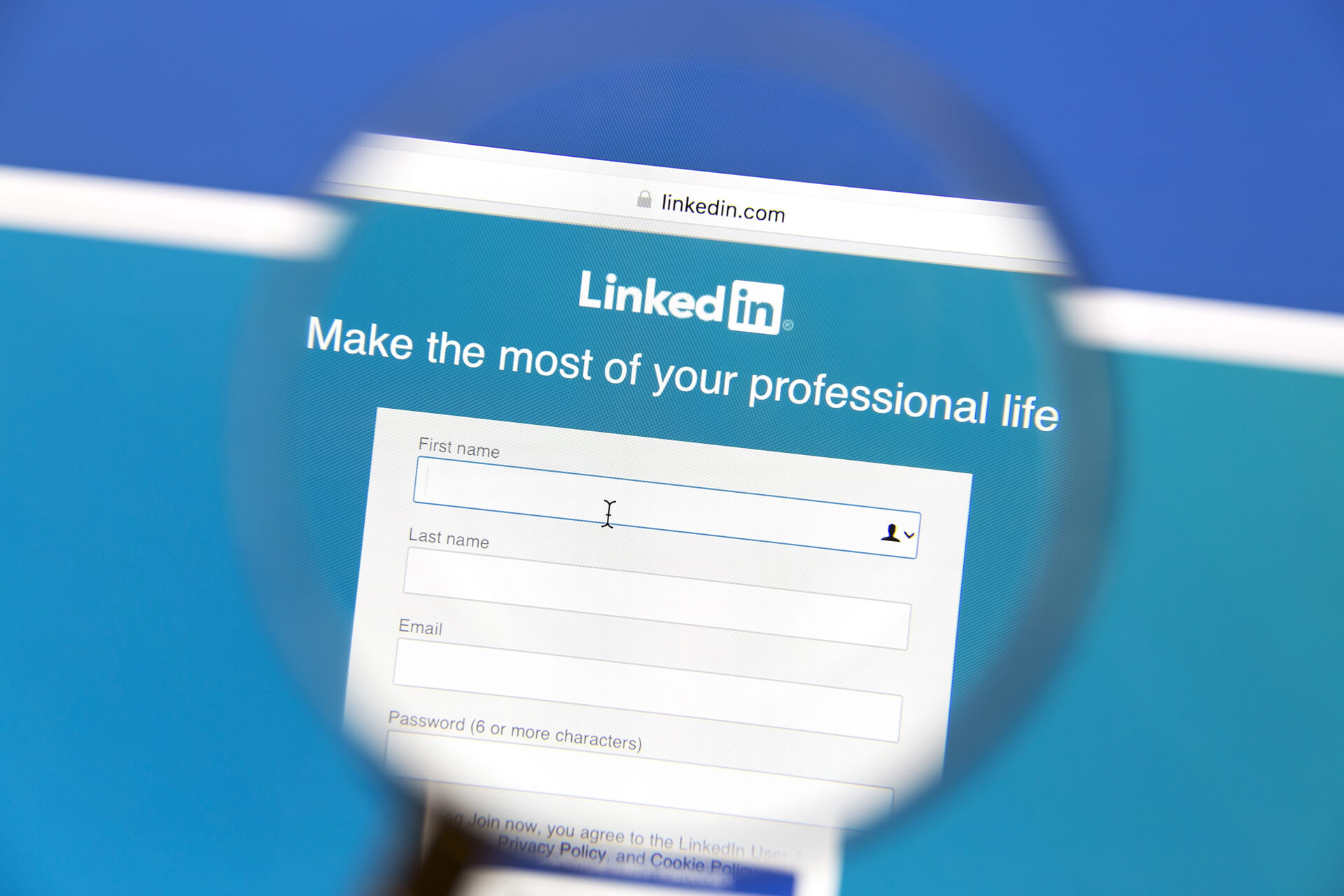We all know LinkedIn is a great tool that you can use for networking or finding a new career, but we don’t always take full advantage of its capabilities. It’s easy for first-time users to set up, and even easier to start making connections or looking for jobs. However, an important thing that some people forget about LinkedIn is it’s a great way for you to build your brand.
One of the ways you can do this is by making your profile stand out.
So, if you’re a new user just getting started on the platform, or you’ve been on LinkedIn for a while and you just want to spruce up your profile, you’re going to want to dive into our 15 best LinkedIn profile tips to make your profile stand out.
Tip #1: The first thing you’re going to want to do is make sure you’ve selected a profile photo that showcases who you are. You will want to make sure that your face is easily seen in the photo and that you’re dressed professionally (or at least dressed how you would dress for your dream job). A recent trend with profile photos is adding a bright-colored background to your headshot. The bright colors help to make your picture stand out, and the pop of color has been said to “stop the scroll” so that people spend more time looking at your profile.
Tip #2: While you’re focusing on photos, the next thing you’ll want to do is add a banner image. This should be unique to you, your business, or something you’re passionate about. There are several ready-to-use images available on LinkedIn, which change seasonally. You can also use photo-editing software or a site like Canva to help you design the perfect banner for your profile.
Tip #3: Once you’ve got the perfect profile photo and banner, the next step is to craft an engaging headline. You’ve got 220 characters, so it doesn’t have to be limited to just your job title. Your headline is your chance to stand out by showcasing your skills, and even show recruiters that you might be seeking a new position. An example of this might look like “your current position or the position you’re seeking | a couple skills | seeking a full-time opportunity.” Using vertical lines / or pipes | is a good way to separate the keywords in your headline and make it look more organized.
Tip #4: Take your time and write an “About” section that showcases who you are, where you’ve been, and where you are looking to go with your career. This is one of the most important steps, and, believe it or not, a lot of people skip this section. You’ll want to spend some quality time on this to make sure you get it right. You have 2,000 characters to show your skills and tell your story. Don’t use this section to just list your skills and accomplishments. Share examples of your skills at work. The “About” section is a great way for connections and recruiters to get to know you, so you want to make sure you include as much detail as possible.
Tip #5: Now that your profile is set up, you’re ready to start networking. One easy way that you can start growing your network is to sync your email address book to your LinkedIn profile. This helps you find tons of people that you probably already know are on LinkedIn. Once you start making those connections, your profile will become visible to their connections, as well.
Tip #6: We all have hard and soft skills that we capitalize on to help us make connections and get jobs. Luckily, there is a section on your profile where you can list these skills. As you start making connections, people can endorse you for them, as well. This is a great tool to use to show recruiters what you are capable of, and once you have a few endorsements, it shows that not only do you claim it’s a skill, but others actually agree. You don’t want to create a long list of irrelevant skills, but definitely take time to go through the list, and find the skills that are important to you and the job you do or are looking to do.
Tip #7: Once you’ve added your skills and you’re ready for some endorsements, you can start endorsing others. Go through your network to find people you have worked closely with in the past, and start endorsing them for some of the skills they’ve listed on their profile. Typically when someone receives an endorsement, they will return the favor, so this is a great way for you to encourage others to endorse you, too.
Tip #8: Being endorsed for a skill isn’t enough sometimes. You might want to show that you possess a skill by taking a skills assessment. These are fairly new to LinkedIn, but they are a great way to showcase your skills, and they even earn you a cool Verified Skills badge to display on your profile. These online tests typically require you to pass with at least a 70% or better and cover a wide variety of skills like Excel, Powerpoint, SEO, and so much more. The skills assessments are voluntary and if you don’t pass the first time, you can always retake them.
Tip #9: Outside of skills and endorsements, LinkedIn also has recommendations. These are basically personal testimonials from people who you’ve worked within the past. LinkedIn makes it very easy to request recommendations by providing a drop-down menu that allows you to choose the person and reminds them of your work position. LinkedIn also provides you the final say in whether or not these recommendations are shown on your profile.
Tip #10: You can never go wrong with adding your education and things you’ve learned to your profile. A great way to show that you are continually working to learn and grow is by adding LinkedIn Learning to your profile. These courses allow you to earn certifications for a wide variety of topics, and these certificates can be easily added to your profile. This shows others that you are consistently working to be more knowledgeable and want to stand out in your industry.
Tip #11: If you are a content creator, then this next tip is for you. There is a section on your LinkedIn profile called Featured and this is where you can add projects you’ve worked on, blogs you’ve published, content you’ve created, basically anything that will help you stand out. It’s important that if you add content to the Featured section that it is your original content, and you keep it fresh and update it frequently.
Tip #12: You can follow all of these tips and create an amazing profile, but it’s not going to stand out if you aren’t sharing content and putting your profile out there for others to see. This doesn’t have to be content that you create, it can be shared from other people, but it will make your profile more visible if you are regularly active.
Tip #13: LinkedIn is all about algorithms, so the more you interact, the more others will see your content and be able to interact with you. Even if you are sharing content regularly, it’s not guaranteed that others will see it, so an easy way to ensure your profile and your content are getting the impressions you want is by engaging with other people’s content. This is as easy as a comment on someone’s post. You want your comment to be thoughtful because it will be seen by all of your connection’s connections. This is a great way to get your profile in front of even more people and create new network connections.
Tip #14: To ensure that you have relevant content in your feed to share, you will want to follow relevant influencers within your industry. As these influencers share content you find interesting you can share it for your network to see. The important thing to remember is that you need to add thoughtful commentary to the post, don’t just share it directly from the influencer. As people see you sharing content that is relevant to your industry, they will see that you have a passion for what you do and will understand more about what you have in your profile.
Tip #15: Another way to showcase your passion for your industry and to make your profile stand out is to use LinkedIn as a platform for publishing long-form content. You can share articles and blogs you’ve written and use these as ways to start conversations. If others find your articles to be beneficial, then they will seek out your profile so they can read more of your work.
This might seem like a lot of steps and feel a little overwhelming, but making your profile stand out doesn’t have to happen all in one day. You can break this down into small tasks and work on it over time. The important thing is to make sure you’re taking steps to make your profile stand out so that you can grow your network and pave a path to success.




